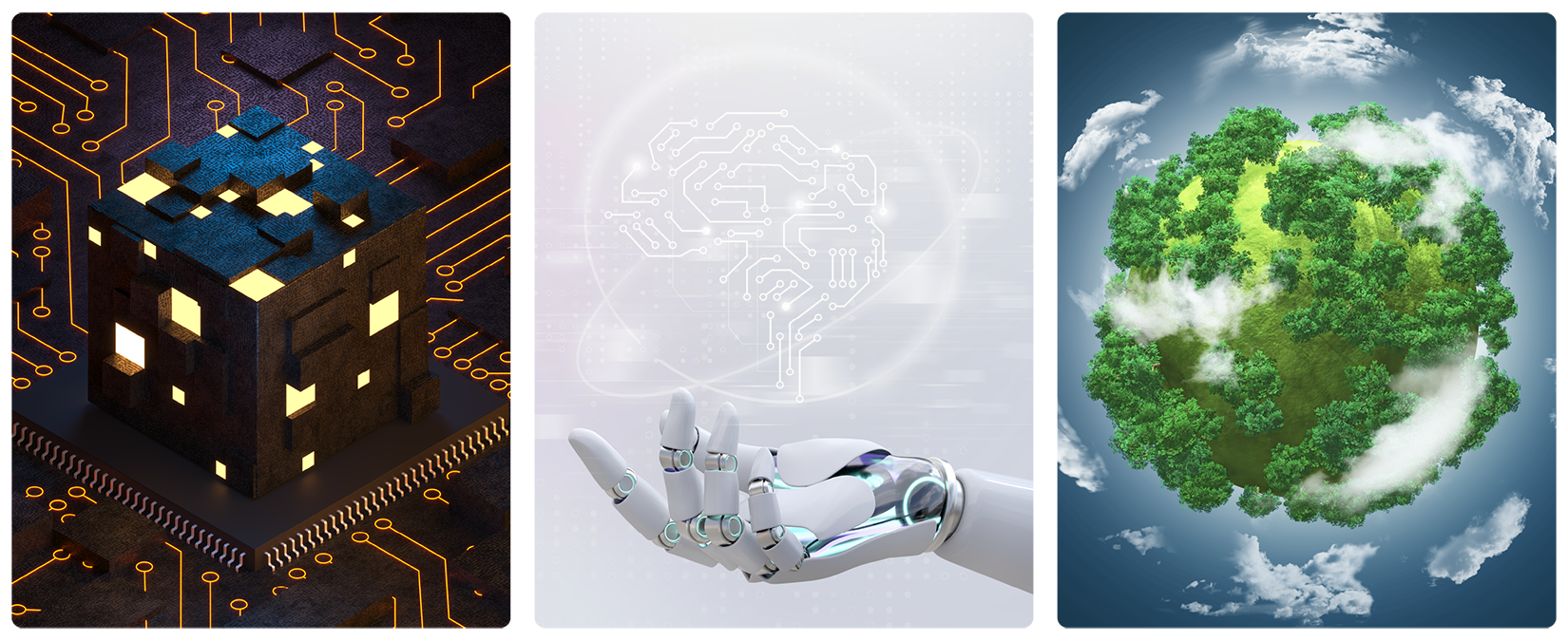Telecommunications in 2025: What to look out for
The start of a new year is the ideal time for us to reflect on the emerging trends that are shaping the Telecommunications sector.
We are experiencing a phase of accelerated transformation, driven by technological innovation and the evolving demands for connectivity. Faced with increasingly disruptive changes, it is essential to anticipate market demands, understand new trends, and implement effective and innovative solutions.
We share some of the most discussed trends for 2025, anticipating potential transformations and exploring paths that may help businesses position themselves strategically in the market.

1. Artificial Intelligence and Automation: the future of operational efficiency
Artificial Intelligence (AI) is transforming industries, including telecommunications, playing an increasingly central role in automating processes, optimizing networks and personalizing user experiences. AI-based solutions are becoming more and more essential for managing large volumes of data, improving infrastructure security and increasing operational efficiency.
Its impact is particularly visible in ecosystems like smart buildings and IoT, where it enables real-time data collection and analysis, facilitating faster and more efficient decision-making. The growing adoption of these technologies reinforces the importance of robust technological infrastructures capable of supporting advanced connectivity and ensuring the performance of intelligent systems.
2. Private 5G Networks: a revolution in mobility
With the consolidation of 5G, many companies are investing in private networks, which offer greater security, control and operational flexibility. These networks allow a high degree of customization, reducing dependence on public networks and ensuring bandwidth dedicated to specific needs.
This year, private 5G networks are expected to gain prominence in sectors like industrial automation, logistics and healthcare, where reliability and low latency are crucial for the smooth operation of processes.
3. Cloudification and the new challenges for Data Centers
The transition to the cloud has been redefining how data is stored and processed, driving the need for data center modernization. This movement, known as cloudification, presents challenges in terms of security, energy efficiency and scalability.
In turn, virtualization and AI are seen as strategic factors for optimizing resource management and improving the resilience of these infrastructures. With the exponential growth of data volumes, the adoption of flexible and adaptable solutions is expected to become a priority for businesses wanting to keep up with this evolution.
At barpa, we are closely monitoring this transformation, developing high-density solutions for Data Centers. Learn more on here.
4. Edge Computing: Decentralized and Localized Processing
Edge computing has been gaining relevance as an alternative to centralized processing, allowing data to be analyzed closer to its origin. This approach is particularly relevant for applications that require reduced response times, such as autonomous vehicles and IoT devices.
The decentralization of data processing promises to optimize the flow of information and reduce network congestion, contributing to more efficient connectivity. As infrastructure evolves, edge computing is expected to continue being explored as a key solution to support the growing complexity of digital systems.
5. Cybersecurity, a priority in the era of connectivity
The increasing digitization and expansion of telecommunications networks have placed cybersecurity at the forefront. The advancement of 5G, the proliferation of IoT devices and the migration to the cloud are all increasing the attack surface, making the development of more effective protection strategies essential.
The trend points to the implementation of more secure infrastructures, with advanced encryption, network segmentation and AI applied to threat detection. Models like Zero Trust, which assume no user or device should be automatically trusted, are being increasingly explored to enhance security in decentralized ecosystems.
In this scenario, adaptability and innovation could be a critical factor in ensuring a more secure and resilient digital environment, requiring solutions that allow businesses to operate with confidence in an increasingly connected world.
6. Sustainability as a path to innovation
Sustainability is one of the major forces shaping the future of industries and telecommunications is no exception. The growing demand for more responsible practices is driving innovations such as smart grids for decarbonization and the expansion of infrastructures for electric vehicles, reflecting the need for more efficient and eco-friendly solutions.
At barpa, sustainability is deeply embedded in our culture. We are ISO 14001:2015 certified and committed to practices that reduce our environmental footprint. Additionally, 54% of our product lines are already transitioning to sustainable packaging, minimizing environmental impact and optimizing product usage.
Continuous adaptation will be the theme for this year. It is predicted that 2025 will be a year of constant evolution, and this possibility will drive companies to embrace adaptability, positioning themselves to thrive in a rapidly changing technological landscape.
We hope this article has provided a clear insight into the trends that may shape the industry in the coming years. We are ready to be your strategic partner, promoting solutions that drive innovation, efficiency and sustainable growth.


Sorry, the comment form is closed at this time.